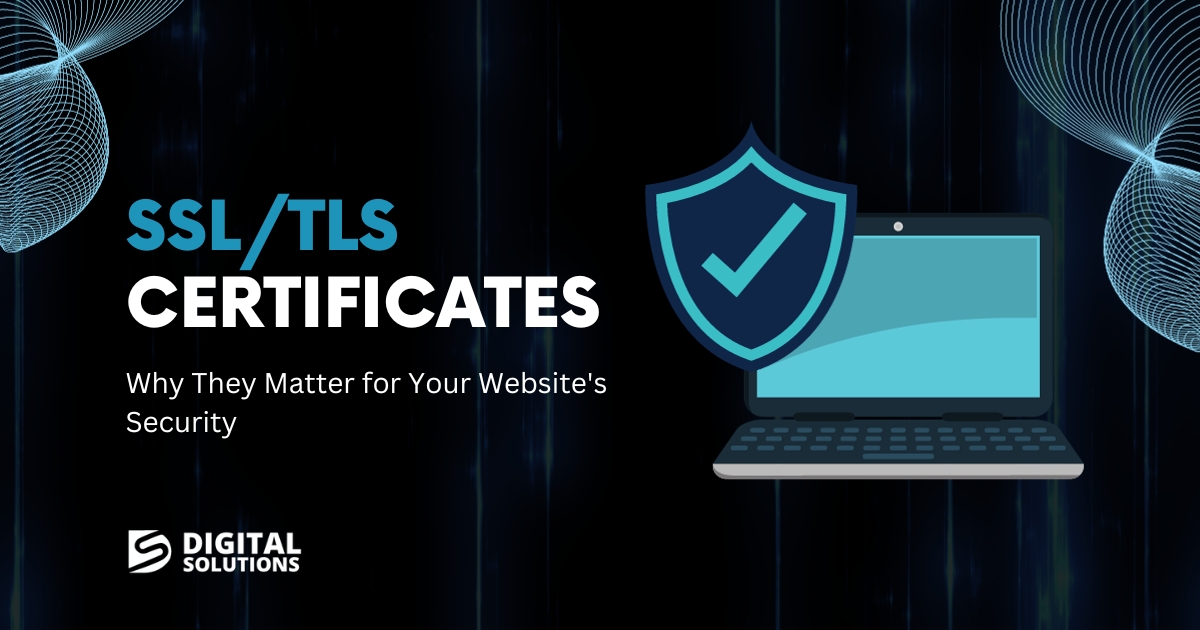Delve into the world of SSL/TLS certificates and discover why they are vital for ensuring robust website security. Learn about their role in encrypting data transmissions and establishing trust with visitors, brought to you by Techtenstein.
In today’s digital landscape, ensuring the security of your website is crucial. One fundamental aspect of web security is the implementation of SSL/TLS certificates. These certificates encrypt data transmitted between a user’s browser and your website, protecting sensitive information and establishing trust with your visitors. Here’s a guide to understanding the essential SSL/TLS certificates for site security.

What is SSL/TLS Certificates?
- Definition and Purpose
- Define SSL (Secure Sockets Layer) and TLS (Transport Layer Security) certificates as digital certificates that authenticate the identity of a website and enable secure communication between the server and the browser.
- Encryption and Authentication
- Explain how SSL/TLS certificates use encryption algorithms to protect data in transit and verify the authenticity of the website to ensure a secure connection.
Types of SSL/TLS Certificates
- Domain Validation (DV) Certificates
- Discuss DV certificates, which validate the domain ownership only and are ideal for basic encryption needs, such as blogs and informational websites.
- Organization Validation (OV) Certificates
- Explore OV certificates, which validate both domain ownership and the organization’s identity, providing a higher level of assurance and trust to visitors.
- Extended Validation (EV) Certificates
- Highlight EV certificates as the most secure option, undergoing rigorous validation procedures to display the organization’s name prominently in the browser’s address bar, instilling maximum trust in visitors.
How SSL/TLS Certificates Work
- Handshake Process
- Explain the SSL/TLS handshake process, where the server and browser exchange cryptographic keys to establish a secure connection, ensuring data confidentiality and integrity.
- Encryption Algorithms
- Discuss the use of asymmetric and symmetric encryption algorithms in SSL/TLS certificates to encrypt data transmissions and protect against eavesdropping and tampering.
Importance of SSL/TLS Certificates for Website Security
- Data Protection
- Stress the significance of SSL/TLS certificates in safeguarding sensitive information, such as login credentials, payment details, and personal data, from interception by cybercriminals.
- Trust and Credibility
- Highlight how displaying a valid SSL/TLS certificate signals to visitors that the website takes security seriously, enhancing trust and credibility, which can lead to increased conversions and customer loyalty.
SSL/TLS Certificate Lifecycle Management
- Certificate Issuance
- Explain the process of obtaining SSL/TLS certificates from Certificate Authorities (CAs), including verification of domain ownership and organization identity.
- Renewal and Maintenance
- Discuss the importance of regular certificate renewal and maintenance to ensure uninterrupted security protection and compliance with industry standards.
SEO Benefits of SSL/TLS Certificates
- Google Ranking Factors
- Highlight Google’s preference for secure websites and how SSL/TLS certificates contribute to better search engine rankings, improving visibility and organic traffic.
- User Experience
- Explain how secure connections indicated by HTTPS (Hypertext Transfer Protocol Secure) enhance user experience and encourage longer engagement on the website, reducing bounce rates and improving metrics.
Common SSL/TLS Certificate Errors and Troubleshooting
- Certificate Expiry
- Address common issues such as certificate expiry and its implications on website security, emphasizing the importance of timely renewal to avoid service disruption.
- Mixed Content
- Discuss mixed content warnings caused by insecure resources loaded over HTTPS, and provide solutions to resolve these issues and maintain a secure browsing experience for visitors.
Future Trends in SSL/TLS Technology
- TLS 1.3 Protocol
- Explore the benefits of the TLS 1.3 protocol, such as improved security, faster connection times, and enhanced privacy, and discuss its adoption trends.
- Wildcard and Multi-Domain Certificates
- Highlight the growing popularity of wildcard and multi-domain certificates for securing multiple subdomains and domains under a single certificate.
Common SSL/TLS Implementation Issues
- Mixed Content Warnings
- Explain how mixed content warnings occur when insecure resources are loaded on HTTPS pages, and provide solutions to resolve them.
- Certificate Expiry
- Discuss the importance of monitoring SSL/TLS certificate expiry dates and implementing automated renewal processes to prevent service disruptions.
SSL/TLS Implementation Process
- Certificate Authority (CA) Selection
- Provide guidance on choosing a reputable Certificate Authority to purchase SSL/TLS certificates, considering factors such as validation level, warranty, and support.
- Certificate Installation
- Outline the steps involved in installing SSL/TLS certificates on web servers, including generating a certificate signing request (CSR), verifying domain ownership, and configuring server settings.
Choosing the right SSL/TLS certificate is essential for your website’s security and trustworthiness. Whether you need basic domain validation or the highest level of extended validation, there is a certificate that fits your needs. Implementing the appropriate SSL/TLS certificate not only protects sensitive data but also enhances your site’s credibility and trust among users. Always ensure that your certificate is up to date and properly configured to maintain robust security for your website.



